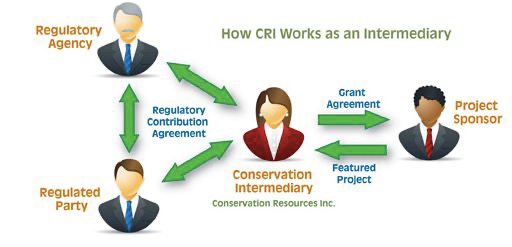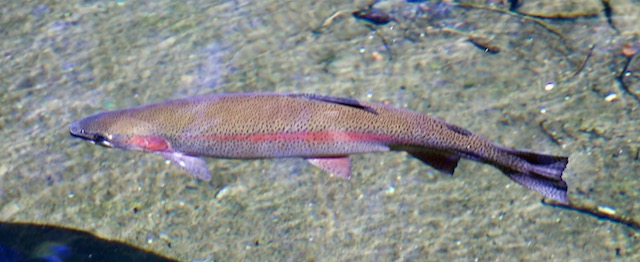Vague Platitudes, No Priorities, No Specifics, and No Tough Choices
9 Months Of Deliberation Delivered This Pap?
Part one set the context, basically so people could get a feel for how broken and biased the current DEP forestry policies, plans and programs are (and it’s been that way for a long time, cheerled by many conservationists, like entrepreneurial Mike Catania, see this.)
Part Two today highlights excerpts of the recommendations of the Legislative Forestry Task Force, each followed by my brief criticism (in red). This is off the top of my head and a first cut (I walked out of the Task Force after the first meeting, when they issued a gag order and rejected a Resolution I proposed without discussion, designed merely to stop the damage, set priorities, and endorse proforestation:
In the full Task Force document the below excerpts are followed by a short paragraph of text. Readers should read the whole document. I only provided the boldfaced headlines from the document (the Task Force provided those boldface headlines, not me).
The Task Force process was initiated by Senator Smith purportedly to significantly reform those DEP policies in light on the climate and ecological emergencies, se:
Let me begin by noting that document does not discuss or critique the current conditions of the forest or evaluate the current DEP forestry planning and policy. Thus, it is impossible to know what the issues of concern are and the reforms that must be addressed.
Worse, the recommendations do not state clear goals, objectives, priorities, criteria, or standards upon which a Statewide Forestry policy or plan could be founded. Where goals are mentioned, they are limited to the DEP’s “80X50” Report and the Global Warming Response Act. Both those documents are already obsolete in terms of climate science and with respect to the goals and timetables. Plus, the GWRA goals are purely aspirational and not enforceable. And they do not even reflect the goals and timetables of Gov. Murphy’s Executive Orders. That’s truly pathetic and unacceptable.
There are no recommendations that forestry be subject to the full suite of NJ DEP environmental laws and regulations, that standards be strengthened, and that loopholes be closed, like wetlands, stream encroachment, stormwater, water quality standards, Highlands, Pinelands, CAFRA, soil erosion, and steep slopes.
The recommendation do not begin to address climate and proforestation policies and include recommendations that would allow expansion of logging in NJ’s vanishing forests. They apply only to public forests, which are only half of NJ’s forested lands, the other half are privately owned. Most logging occurs on private land, according to DEP FAP: (p. 84)
Virtually all harvest removals of merchantable bole volume of sawtimber trees on timberland has occurred on private lands according to FIA for 2009 to 2017 (Figure 73).
And they do not recommend that numerous loopholes be repealed, BMP documents be revoked, and do not include any explicit new enforceable regulatory standards. Thus are a complete sellout.
Finally, the entire approach is overly technocratic, anti-democratic, and reliant on “expertise”. This approach is an assault on the public’s control of public lands and the future of all forests, public and private. Forests are a public good, not a commodity. The private property interests in ownership of forested lands must be subordinated to public objectives and public controls.
Recommendation 1:
The NJDEP should be directed to initiate and conduct a statewide planning and mapping process for forested public land
The recommended planning process is just that, a process. No goals, priorities, objectives, standards, criteria or timetables are specified. The plan is not tied to funding or regulations. The DEP is given control of this process, with unfettered discretion. That is a prescription for the status quo. The DEP can state that they already adopted a Forest Action Plan. The recommended scientific advisory panel would serve to blunt democratically expressed public preferences and is far too technocratic a body to be controlling the policy agenda (“trust us, we’re experts!”). There is no suggested integration with current plans, like the Highlands or Pinelands plans. The highlighting of protection of indigenous lands is an indentity politics virtue signaling sham. The Gov. and the DEP Commissioner are shielded from any demands for leadership or policy accountability.
Recommendation 2:
The NJDEP should be directed to commence a formal rulemaking process for the development of forest management plans* on public forests
This is a completely empty gesture. What would be in such regulations? They would only be “informed” by the mapping and plan?. And the 3 YEAR timetable is far too long and absurd.
Recommendation 3:
The NJDEP should be directed to initiate and complete rulemaking to provide interim guidelines for forest management plans* on public lands.
This two step interim and final procedure is bureaucracy run riot. All process, no substance.
Recommendation 4:
The NJDEP should be directed to revitalize and implement the existing Natural Areas Program.
I support this recommendation. It specifies a real existing program, the expansion of that program (but not fully clear where) and recommends appointments, funding, and staffing to implement the program (but no staff or revenue targets are provided, so it’s essentially toothless).
Recommendation 5:
The NJDEP should be directed to identify areas where afforestation and reforestation should occur on public lands.
I support the intent of this recommendation, but not its limitation to public lands, which ignore private lands. There also needs to be a formal and enforceable linkage to the carbon storage/sequestration related goals of the Global Warming Response Act. Also, there needs to be some linkage to a “no net loss” or “mitigation” scheme such that there would be an enforceable mechanism to assure implementation. Finally, there needs to be acreage, biomass, carbon or some other standards and objectives specified, or else this is merely a platitude.
Recommendation 6:
The NJDEP should be directed to establish a new program within the agency to designate carbon reserves, as identified through the planning process, with a primary goal of protecting mature forests and providing for future old growth forests (as defined by the science advisory panel*) for their carbon benefit.
Bad idea. “Carbon reserves” should not be designated and isolated little ghettos. The carbon imperative must be statewide, as should be the goal of promoting and protecting mature forests – and it needs to be accompanied by a repudiation of DEP’s current politics of promotion of “young forests”. Finally, this recommendation includes an “oversight council”, while no public members are specified, it does include “private interests representing appropriate expertise.” That’s another bad idea – both the restrictions to private and experts.
Recommendation 7:
The NJDEP should be directed to identify areas where active management is needed to promote future carbon sequestration, maintain biodiversity, and to address current and future threats to ecological health
VERY Bad idea. Active management is a sham. This is the program DEP is now implementing.
DEP’s interpretation of “active management” and the forestry programs they implement under that slogan are NOT consistent – as claimed – with the goals of the GWRA or DEP’s “80X50” Report.
Recommendation 8:
The NJDEP must recognize the importance of adaptive management during the inventory and planning process, whereby planning, inventory, and management approaches are adjusted over time based upon new data and changing circumstances in our forests.
This is a formula for backsliding, ad hoc and site specific compromised decisions, and infinite revisions. We need reliable clarification goals and objectives, not a slippery slope.
Recommendation 9:
The NJDEP must recognize the significant variation in our forests, both on a macro (landscape) level and micro level as a guiding principle of the planning and rule-making process.
So what?
Recommendation 10:
NJDEP must protect and manage NJ’s public forestlands to maintain and enhance carbon sequestration and storage as necessary to advance state climate goals* while advancing equally important goals of ecological health, biological diversity, climate resiliency, and protection of water and soil resources while providing low-intensity, safe public recreation opportunities.**
DEP has already estimated carbon sequestration and storage in their GHG inventory and “80X50” Report. Are these goals adequate? No.
The carbon goals are to be measured in the aggregate, which allows all sorts of averaging and off-site trading schemes to avoid compliance. Think wetlands mitigation banking. Bad idea.
Hunting is stealthed into this climate goal – in the fine print of an asterisk no less, which is a despicable practice – as “safe recreation”. DEP already manages forests for hunting, which provides a disguised motive for logging and the creation of edge habitat to benefit a small minority of hunters, contrary to healthy forests and the public interest.
The term “sound science” is an industry slogan that should never be used in a public document.
Recommendation 11:
NJDEP forest management plans on public land must be developed in accordance with the process established through rulemaking noted in the previous section (Recommendations 2 and 3).
Another all process, no substance.
Recommendation 12:
The NJDEP should continue to use fire as an important management tool based upon sound science.
Sound science. Sounds like science to me.
The Task Force failed to address major flaws in current laws and regulations, including failure to consider air pollution and health effect of prescribed burns, carbon implications, the flaws and limits in current prescribed burn models that have been shown not to consider climate change driven conditions, and the liability relief for damages of a prescribed burn that gets out of control (think USFS prescribed burn in New Mexico this summer. At least the USFS admitted that their models failed and conducted a review and made reforms).
The TF went in the opposite direction with this off the wall recommendation for MORE deregulation:
“The legislature and NJDEP should identify and address any legal barriers that hinder the use of prescribed fire by trained land managers.”
Recommendation 13:
The NJDEP should be directed to amplify efforts to address the impacts of invasive non-native species, including insects, animals, plants, pathogens, and microorganisms.
Sounds like an excuse for abusive active management to me.
Recommendation 14:
The NJDEP should be directed to measure and reduce deer densities in our public forestlands to ecologically sustainable levels, with guidance from the Science Advisory Panel.*
This is a bone to the hunters. Unacceptable. DEP is already mismanaging forests to promote hunting as well as mismanaging the deer population.
Recommendation 15:
The NJDEP should not include commercial profit as a goal in any forest management plan* on public land.
Do they think we’re stupid? Commercial profit can’t be a goal, but DEP can still sell the timber and other wood products! Look at this absurd loophole!
“Wood products can be sold in instances where cutting and removal of wood is a necessary part of an approved plan with ecological health, climate, or other non-commercial goals.
DEP currently masks and defrays the costs of their forests program off budget by giving away the wood in “stumpage contracts” to contractors. If DEP foresters support active management, take the money out of their budget, so their salaries are on the line.
Recommendation 16:
The legislature and others must identify and implement funding mechanisms to ensure success of the recommendations in this report.
Just as I predicted, they’re going after Biden Inflation Act money (but they forgot the infrastructure bill money!) And they even threw a bone to Senator Smith by dreadging up his very old and failed water tax bill.
And they are promoting “tapping carbon markets”. JUST SAY NO TO THAT!
How much money are we talking about?
How about if we take some of the Green Acres, “stewardship”, and watershed planning money that now goes to the non-profits?
Why not set a revenue target?
Like the rest of the recommendations, that’s Lame.


